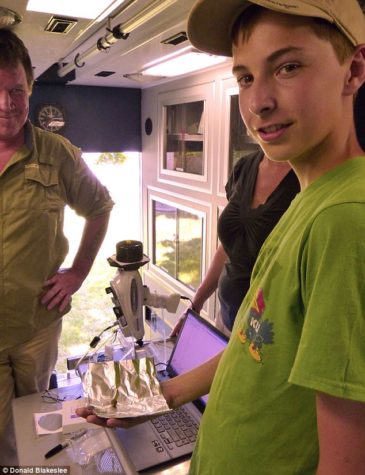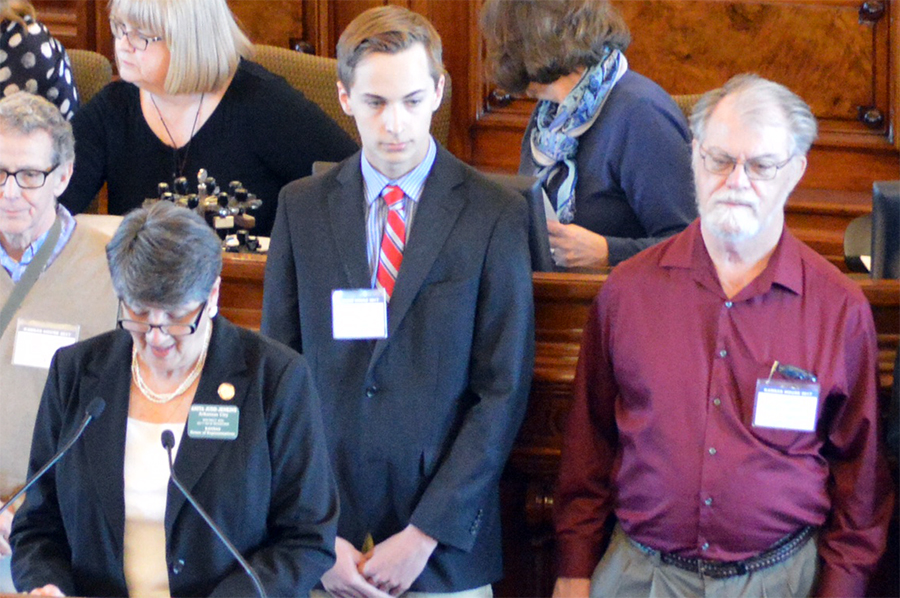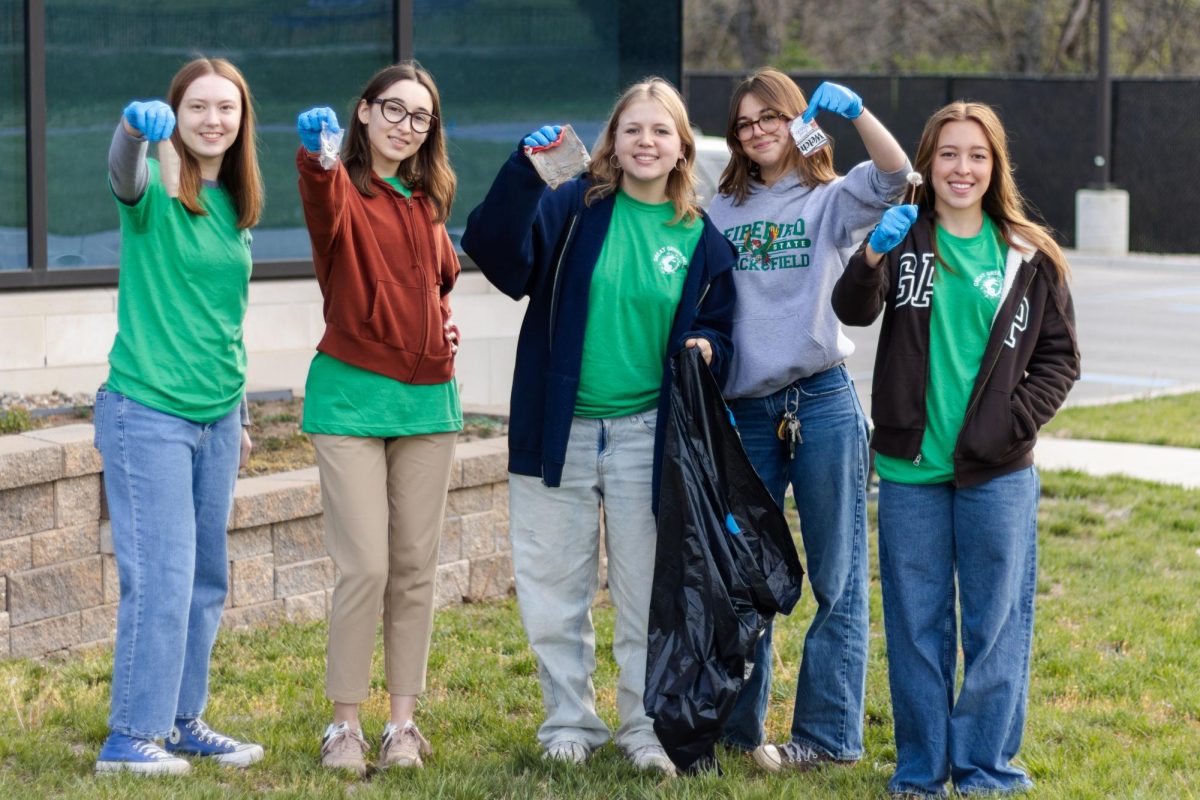Student’s discovery leads to location of second largest Native American city
Junior Adam Ziegler and anthropologist Donald Blakeslee are recognized in front of the Kansas House of Representatives. The site near Arkansas City was recently recognized by the state.
May 7, 2017
“I never thought I would make archeological discoveries,” junior Adam Ziegler said. “Especially not when I was 15.”
What Ziegler uncovered in April 2015 was the first evidence of the location of Etzanoa; a lost Native American city. Ziegler worked with Donald Blakeslee, an archaeological anthropologist and a team of professors from Wichita State University. Two years later, that team of archaeologists has found the city itself, but it wouldn’t have been possible without Ziegler’s initial discovery.
“I kept finding like trash and old cans and stuff,” Ziegler said. “But I really wanted to find something cool, so I just kept searching.”
Spanish soldiers in 1602 recorded that Etzanoa had a population of 20,000 people, making it the second largest Native American city ever found according to Blakeslee. The largest settlement ever discovered is Cahokia located just outside of St. Louis, which peaked at around 40,000 people. Prior to Ziegler’s discovery, people’s guesses on the location of the lost city ranged from central Kansas to northern Oklahoma Blakeslee said.
“People had been speculating about the location of the site since 1916,” Blakeslee said.
While Ziegler was visiting the land where his grandmother lived, he followed the team of professors who were searching for evidence of an important battle. The land was thought to be the site of a skirmish between Spanish Conquistadors and the Native Americans living in Etzanoa according to Blakeslee. After a few hours of not finding anything, Blakeslee gave Ziegler a chance to use one of the metal detectors.
After searching for hours, Ziegler dug up a small iron ball, possibly canister round shot from a cannon according to Ziegler

Ziegler stands with the piece of canister shell he uncovered near Arkansas City. The iron ball was fired from a cannon like a shotgun according to Ziegler.
“[Blakeslee] was really excited as soon as I pulled it out of the ground and he called everyone over,” Ziegler said.
Blakeslee confirmed it was shot from a Spanish cannon, which became not only the first artifact of the battle ever discovered, but also supported the theory that Etzanoa was located nearby.
The discovery was published internationally and a documentary, “Quivira: Conquistadors On The Plains” was produced by the Archaeological Legacy Institute. It also sparked a larger expedition with students from Colorado and officials from the National Parks Service in the summer of 2015.
Since the discovery two years ago, the area has been recognized by the state of Kansas. Students at Wichita State are also working on a letter to add the site to the National Register of Historic Places according to Blakeslee.
Through the expedition, Ziegler learned about the Wichita and how they lived. He also gained an appreciation for local history and is enthusiastic about future expeditions.
“We need to keep looking for artifacts and make new discoveries so we can learn about the past,” Ziegler said.









